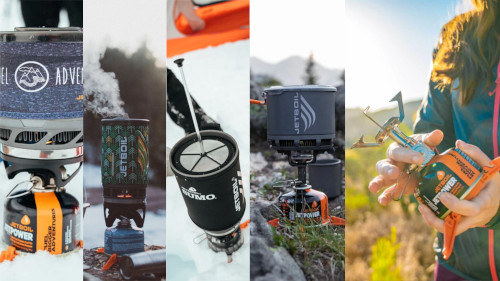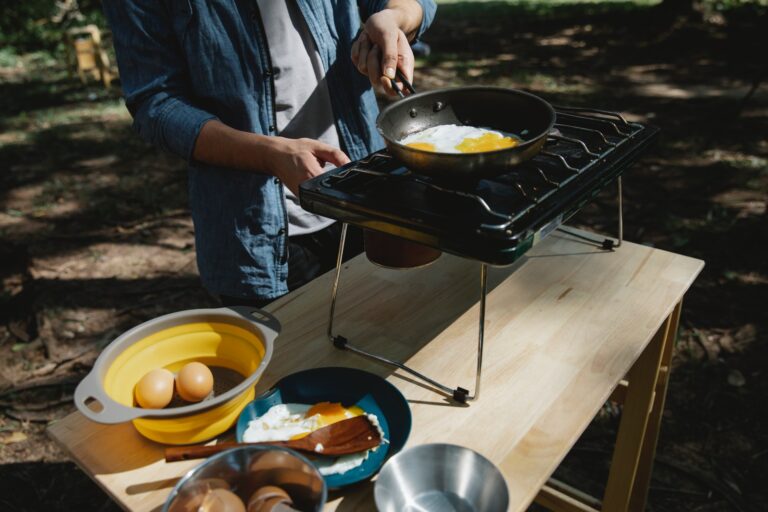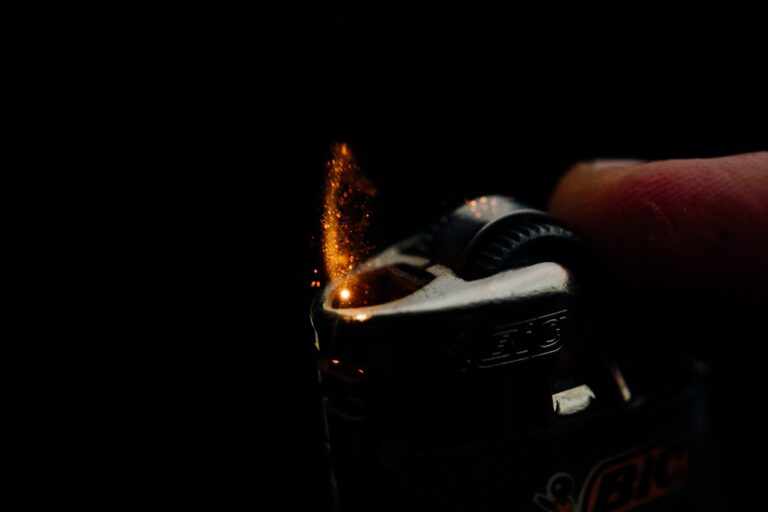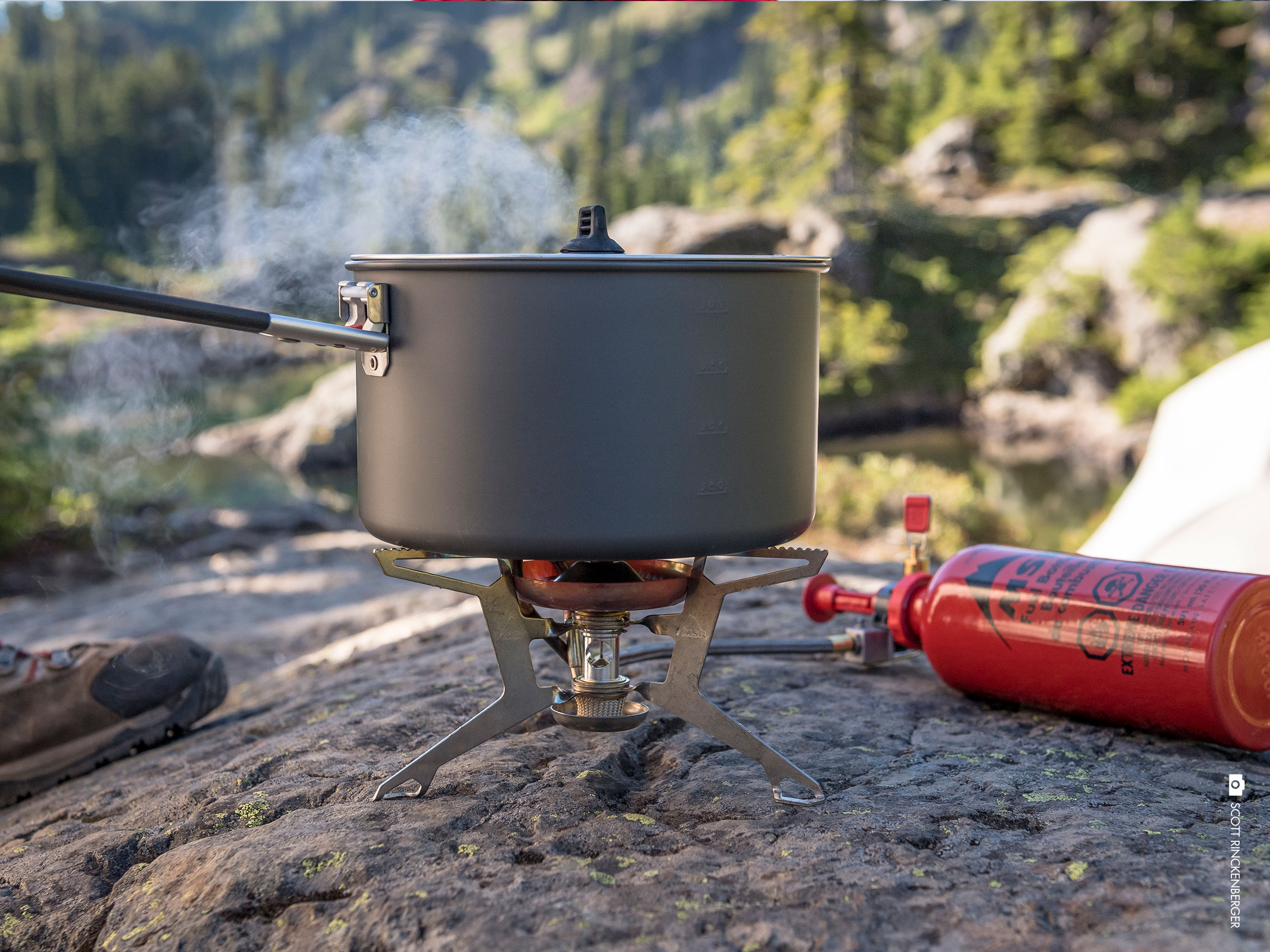
Backpacking Stoves
Embarking on a backpacking adventure is a thrilling experience, but ask any seasoned backpacker, and they’ll tell you that having the right gear can make all the difference. Among the essentials, a reliable backpacking stove stands out as a silent hero. Picture yourself savoring a steaming cup of coffee as the sun peeks over the horizon, or relishing a warm, nourishing dinner beneath twinkling stars. These simple yet profound joys are often the snapshots we carry home from our wilderness excursions, and at the heart of them is the humble backpacking stove.
In this guide, we’ll walk you through the world of backpacking stoves, exploring the diverse options available and helping you make an informed choice. From lightweight models that won’t weigh you down to efficient designs that ensure a hassle-free cooking experience, we’ve got you covered. So, let’s dive in and discover the perfect stove that suits your backpacking style, all while learning the essential tips to keep it in top-notch condition throughout your adventures. Whether you’re a novice or a seasoned trekker, the right backpacking stove can be your trusted companion, turning each meal into a celebration of the great outdoors.
What’s A backpacking stove?
A backpacking stove is your trusty culinary companion on the trail, a compact powerhouse designed to keep you well-fed without compromising on the adventure. It’s a compact, lightweight contraption that fits snugly into your backpack, leaving ample space for all your other adventure essentials. But it’s not just about being portable—modern backpacking stoves are the very fuel efficient. They sip fuel conservatively, ensuring you don’t lug around more than necessary.
Versatility is the name of the game with backpacking stoves. Sure, they’re your go-to for hiking and backpacking, but they’re also the unsung heroes of outdoor events, catering gigs, field hospitals, and military missions. These trusty companions ensure you’re well-fed and ready for whatever the wild throws your way during those extended expeditions. Now, let’s dive deeper.
Brief History Of The Portable Stove
Before the sleek backpacking stoves we know today, there was the shichirin, a nifty lightweight charcoal stove that has its roots in Japan since at least the Edo period (1603-1868). Think of it as an early version of a small charcoal grill, with many ancient examples still kicking around in old houses.
Fast forward to the mid-19th century, where culinary innovation was stirred up by French-born chef Alexis Soyer. Taking the helm at the Reform Club in London from 1837, Soyer didn’t just cook; he revolutionized. Among his creations was the “magic stove,” a portable marvel hitting the market in 1849. Soyer’s brainchild drew inspiration from the mechanics of a kerosene lamp, employing a wick to transport fuel from a reservoir to a burner, giving people the power to cook wherever their adventures took them.
Since that groundbreaking 19th-century moment, the world of portable stoves has seen an evolution as diverse as the landscapes they accompany. From unpressurized stoves utilizing solid or liquid fuel to the bottled gas wonders and gravity-fed “spirit” stoves, the journey of these trusty cooking companions has been nothing short of remarkable. Join us as we explore the fascinating timeline and designs that have shaped the backpacking stove into the essential outdoor tool it is today.
Different Backpacking Stove Types
Backpacking stoves come in a variety of types and are generally categorized by the type of fuel they use. The main types of backpacking stoves are canister stoves, liquid fuel stoves, and alternative fuel stoves.
Canister Stoves

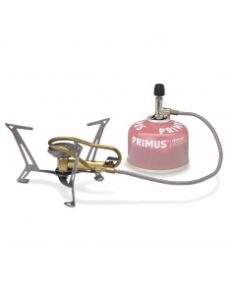
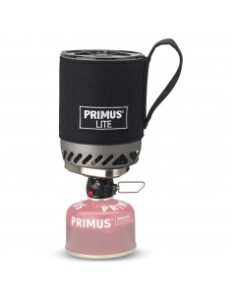
Canister portable stoves are usually very compact and easy to use. They use fuel from a prefilled canister that is connected via a fuel line or directly onto the stove. Canister stoves are suitable for beginners and we recommend getting one if you’re looking to buy your first backpacking stove. The downside is that these canisters can be hard to find in remote locations or internationally, and they’re not as environmentally friendly since they’re single-use canisters. If you’re buying your first backpacking stove, or you’re looking for maximum convenience, we recommend getting a canister stove. There are three main types of canister stoves. They are ultralight, integrated, and remote canister stoves.
Pros:
- Small and lightweight.
- Quick to light. Simply turn the valve and light it with a match, lighter, or piezo-igniter.
- Flame is easily adjustable (most models).
- Canister self-seals, so there are no spills and leaks.
- Some stoves have a built-in pressure regulator. This can improve cold weather and high-elevation performance.
Cons:
- Stove arms may not be long enough to hold large pots securely.
- It’s tough to know how much gas is left inside the closed canister. You may want to carry an extra one to be sure you don’t run out.
- Canisters may depressurize in cold weather and produce a weak flame unless the stove has a pressure regulator.
- The cost of fuel is greater when compared to liquid-fuel stoves.
- Not eco-friendly. Empty canisters need to be disposed of properly.
Ultralight Canister stoves
The classic canister stove is a classic for a reason: Not only is it most backpackers’ first stove, but it’s also their last. It’s the do-everything workhorse of the camp stove lineup. It’s typically the most versatile, reliable, and hardworking option available. A canister stove is dubbed such because it’s just a tiny attachment that screws directly on top of the canister and provides a base on where you can balance your pot or pan to heat. Most of these stoves are incredibly small, fold up compactly, and weigh only a few ounces. You twist a fuel release to get the gas flowing, light with a match or igniter, turn up the flame, and start cooking.
Integrated canister systems
These tall-profile systems offer a combination of the canister, burner, and insulated cooking pot to create a cohesive system. The cooking pot has a lid with drain holes and a sip hole that connects seamlessly to the burner with a twist-on. The built-in windscreen makes the system more efficient when transferring heat. They can be used with accessories such as a French press for coffee making. The canister, pot, and stove all nest inside each other, which makes it easy to pack and takes less room in your backpack. However, compared to standard canister stoves, the integrated system is heavier and prone to tip-overs. For most beginner backpackers, an integrated canister stove is the most straightforward option.
Remote canister stoves
Remote canister stoves are similar to ultralight stoves, but they run a fuel line from the burner to the fuel canister. Some canisters can be used upside down to improve cold-weather performance and you can also use a windscreen to help the stove to heat more efficiently. These stoves may have wider support arms for large-pot stability. The fuel line and support arms might add a few more ounces compared to an ultralight stove.
Liquid fuel stoves
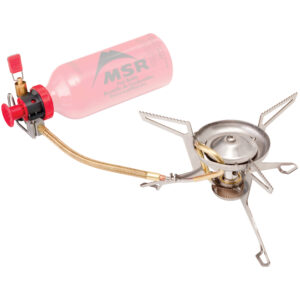
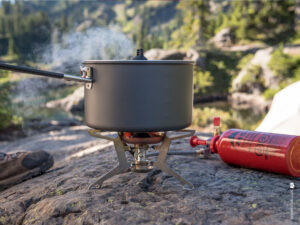

Liquid fuel stoves run mainly on white gas, which is the best camp stove fuel and is the cleanest burning. It’s possible to use other fuels like kerosene and even gasoline or diesel if nothing else is available. Fuel versatility and availability make liquid camp stoves a good idea for international or remote trips where access to canisters might be limited. The downside is that the stoves are more complicated to use. Most require priming to get them started. They also require periodic maintenance and replacement of some bits and pieces. These stoves are recommended for more experienced hikers and mountaineers. These stoves also perform very well in cold temperatures and high altitudes.
Pros:
- Liquid-fuel stoves tend to be low-profile and offer greater stability on uneven ground.
- It’s easy to tell how much fuel you have left by peering into the fuel bottle.
- Fuel is cheaper and the tank is refillable.
- Perform better than other options at high altitudes and cold temperatures.
Cons:
- Needs priming and maintenance.
- Fuel spills are possible.
- Tend to be heavier than canister stoves.
- Multi-fuel stoves can cost a bit more.
- Fuels other than white gas have more impurities that may clog stove parts such as the fuel tube.
Alternative fuel Stoves
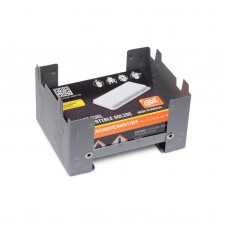


Alternative fuel stoves don’t use liquid or gas. There are three main groups of alternative fuel stoves: alcohol, tablet, and wood stoves. These types of stoves are often used by experienced backpackers who wish to have the lightest gear possible, although they may be a bit more difficult to use than stove systems. There are also more experimental options available, such as a solar stove. We haven’t tested those, so can’t say anything based of off personal experience.
Alcohol-burning stoves
These are the smallest and lightest stoves on this list. They’re very simple, with no moving parts to break, they boil water quickly and the alcohol they burn is readily available. They are also very inexpensive and many choose to make their own out of aluminum soda cans or other cans and containers. Despite the benefits of alcohol stoves, they burn considerably slower than both liquid and canister stoves and they do take a little bit of practice to use safely. It’s easy to spill their fuel, leaving you without a heat source and with smelly gear.
Pros:
- Easy to use
- Very lightweight and compact
- Simple with no moving parts
- Inexpensive
- Very quiet
Cons:
- Slow cooking times
- Less efficient than other fuel types
- Poor performance in wind and cold weather
- No temperature control
- Hard to see the flame, and easy to spill fuel
- Can’t be used during most fire bans
Solid fuel-burning (Tablet) stoves
These stoves burn special fuel tablets that burn very hot and fast. Like alcohol stoves, tablet stoves are very lightweight, portable, and inexpensive. The downside is that the tablets emit a chemical odor when burning and may leave residue on the cookware. It’s not possible to control the heat level and you’ll need to get used to your stove. We recommend tablet stoves for experienced hikers. There are much better options available for beginners.
Pros:
- Easy to use
- Very lightweight and compact
- Inexpensive
- Very quiet
- No fuel spilling
Cons:
- Less efficient than other fuel types
- Slow cooking times
- Expensive fuel
- Poor performance in wind and cold weather
- No temperature control
- Burns with an unpleasant odor and leaves residue on the pot
- Can be tough to resupply fuel
- Can’t be used during most fire bans
Wood-burning stoves
Wood-burning stoves are designed to burn dead wood to heat your water and food. You can find some branches and scraps of wood close by and won’t have to carry fuel around. They burn much more efficiently than an open campfire while producing less smoke. Some models feature a USB charger which can be used to charge your electronics. There are a couple of obvious drawbacks. You’ll need to be camping somewhere without fire restrictions and with plenty of wood to burn. If it has been raining recently and you fail to light your fire, you’ll be without warm water and food.
Pros:
- Fuel is easy to find in forested areas
- Don’t have to buy and carry fuel around
- Renewable fuel resource
- Nostalgic & pleasant
Cons:
- Can’t be used during most fire bans
- Slow to use and not very efficient
- Poor performance in wet and cold weather
- Pots end up covered in black soot
- More time, effort & practice required
- Hard to find fuel when wet or above the treeline
Choosing the Right Backpacking Stove
Picking the ideal backpacking stove is a bit like crafting your outdoor kitchen, and there are a few key factors to mull over. Ask yourself: What type of fuel suits my adventure best? Is weight a top priority, or am I after some nifty features for convenience? Budget or premium? Need speed or can you embrace the slow-cooking vibe? Let’s break it down.
First up, the fuel type dance: canister, liquid, or something alternative? Consider what’s readily available on your journey, so you’re not left with a hungry belly and no way to cook up a storm. Weight matters too—do you lean towards ultra-light simplicity or a stove with a few bells and whistles for smoother operation?
Next, let’s talk dollars. Are you eyeing a budget-friendly option or going all-in for top-notch performance? Boil time can be the deciding factor between a swift 3-minute water party or a leisurely wait, depending on the stove’s heat output and the unpredictable weather.
If culinary creativity is on your camping menu, simmer control becomes crucial. Are you sticking to dehydrated meals, or is there a gourmet craving for bacon, eggs, and pancakes? And don’t forget Mother Nature’s moods—consider a liquid fuel or inverted canister stove if your adventures involve chilly mountain peaks or winter wonderlands.
Cooking for one, or whipping up a feast for the squad? Determine your cooking capacity needs. Prioritize your preferences, and voilà! Find the perfect stove match. For a head start, we’ve tested a bunch and recommend the classic MSR PocketRocket 2 for first-timers and the budget-friendly BRS 3000T for those watching the pennies. Dive into more backpacking stove wisdom and check out our other top picks for satisfying your outdoor cooking cravings.
Using Your Backpacking Stove in the Field
So, you’ve got that shiny new backpacking stove, ready to ignite your outdoor culinary adventures. But before you hit the trails, it’s wise to become pals with your stove through a few test runs. Whether you’re rocking a canister stove or opting for the simplicity of an alcohol stove, we’ve got the perfect guide to spark up your stove knowledge.
Now, whether your stove’s returning from a heat-packed adventure or emerging from a winter slumber, a bit of TLC is in order. Show it some love with our go-to guide on backpacking stove maintenance. Because let’s face it, a well-cared-for stove is a happy stove, ready to whip up your wilderness feasts without a hitch. Maintain your stove fresh to keep your trusty cooking companion in top-notch shape.
Comparison with Other Cooking Methods
Now that we’re delving into the world of backpacking stoves, let’s take a quick peek at the alternatives for satisfying your wilderness cravings. The classic campfire might seem like a cozy choice, but hold on—ever heard of those pesky fire restrictions? Backpacking stoves swoop in with convenience and speed, saving you from the hassle of gathering wood, wrestling with smoke, and dealing with soot-covered cookware. It’s the ultimate backpacking stove vs campfire showdown, and the stoves are taking home the trophy for efficiency and cleanliness.
But do you really need a stove for your backpacking escapade? The short answer is no. Some savvy menu planning can have you enjoying pre-prepared home-cooked delights without the need for wilderness cooking. Pack carefully to avoid spoilage, and you’re good to go.
Now, let’s talk no-cook strategies. Cold soaking, where dehydrated goodies take a dip in cold water until revived, is an option. Warning: a diet of perpetually cold meals might lose its charm quickly. Alternatively, embrace a no-cook strategy with ready-to-eat options like fruits, nuts, energy bars, and canned tuna.
But before you commit to a stove-less existence, consider the allure of that warm cup of coffee or tea. Beyond just nourishment, it brings a touch of homey comfort to your outdoor experience. So, whether you’re Team Stove or contemplating a fire-side feast, weigh your options and savor the journey.
Recommended Accessories
So, you’ve got your trusty backpacking stove, but here’s the scoop: you can’t whip up a feast directly on the stove itself. It’s time to bring in the supporting cast—pots, pans, and all the fixings. Lucky for you, many stove brands have a lineup of add-ons that play nice with their stoves. Think coffee presses, utensils, and cooking pots tailor-made to snugly house your stove. If you’ve gone for an integrated stove system, you might already have a cooking pot in the mix, but for other stove types, it’s a separate purchase.
Now, here’s the lowdown on the must-have accessories to elevate your outdoor cooking game. From compact cookware sets to lightweight utensils, these additions ensure you’re not just surviving but thriving in the wild culinary world. So, let’s dive into the accessory aisle and gear up for a cooking adventure that goes beyond the basics. Here’s our checklist of accessories to toss in with your stove, guaranteeing you a flavorful outdoor experience.
- Cookware Set: Lightweight pots and pans designed for backpacking, often made of durable materials like titanium or aluminum.
- Utensils: Compact and foldable utensil sets, including a spatula, spoon, and fork, making eating and cooking more convenient.
- Windscreen: A portable shield to protect your stove flame from wind, ensuring efficient cooking even in breezy conditions.
- Stove Stand: Elevates your stove for stability and improved airflow, particularly useful on uneven surfaces.
- Coffee Press: For the coffee aficionados, a press that fits onto your stove to brew a cup of joe in the wilderness.
- Stove Maintenance Kit: A small toolkit with essentials like a cleaning brush, replacement parts, and lubricant to keep your stove in top condition.
- Fuel Canister Stand: Prevents your fuel canister from tipping over during cooking, enhancing safety and stability.
- Compact Cutting Board: A small, lightweight cutting board for preparing ingredients without taking up much space.
- Multi-tool: A versatile tool that can include a knife, scissors, can opener, and other handy functions for various campsite tasks.
- Spice Kit: A compact assortment of essential spices to add flavor to your meals without carrying bulky containers.
- Mesh Storage Bags: Keep your accessories organized and easily accessible with breathable mesh bags for storage.
- Portable Water Filter: Ensure a clean water supply by including a compact water filter in your backpacking gear.
- Portable Grill Grate: Transform your stove into a mini-grill for cooking meat, vegetables, or fish over an open flame.
Conclusion
In conclusion, the world of backpacking stoves is as diverse as the landscapes they accompany. From the compact and efficient canister stoves to the versatile liquid fuel options and the lightweight alternative fuel choices, there’s a perfect cooking companion for every adventurer.
Remember to explore recommended accessories to enhance your outdoor cooking setup, and don’t forget to give your backpacking stove the care it deserves through regular maintenance. Whether you’re team stove or considering stove-less options, weigh your choices, and savor the journey.
In the end, a well-chosen backpacking stove becomes more than a piece of gear—it becomes a reliable partner, ready to turn your wilderness meals into memorable outdoor feasts. So, gear up, ignite your stove, and let the adventures begin
Latest Posts About Backpacking Stoves
Test test One Two
MSR WhisperLite Review The first time I used the WhisperLite stove was…
Best Jetboil Stove For you – How to Choose?
Best Jetboil Stove For You Jetboil has long been the gold standard…
How Much Stove Fuel Do I Need for a Backpacking Trip?
How Much Stove Fuel Do I Need for a Backpacking Trip? If…
How Powerful Camping Stove Do I need? – BTU Explained
How Many BTUs do you need? Every article about stoves mentions something…
Does Camp Stove Fuel Go Bad?
Does Camp Stove Fuel Go Bad? You’re planning your next backpacking or…
Are Backpacking Stove Piezo Lighters Worth it?
Are Backpacking Stove Piezo Lighters Worth it? Among the many options available,…
